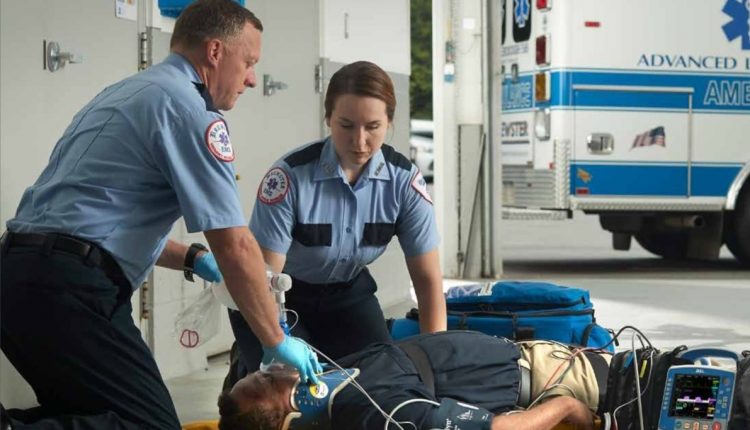
Cardiac Arrest: ເປັນຫຍັງການຈັດການທາງເດີນອາກາດຈຶ່ງມີຄວາມສໍາຄັນໃນລະຫວ່າງການ CPR?
Airway ແລະ CPR: ການໃຊ້ຢາເກີນຂະໜາດ, ການບາດເຈັບຢ່າງກະທັນຫັນ, ບັນຫາທາງເດີນຫາຍໃຈ, ແລະຄວາມກັງວົນດ້ານສຸຂະພາບອື່ນໆຫຼາຍຢ່າງສາມາດເຮັດໃຫ້ເກີດການຢຸດຫົວໃຈ.
Cardiac arrest is a leading cause of death, but many of these deaths are preventable.
Bystanders providing CPR immediately can double or triple the chance of survival.
The figure is even higher when trained first responders are prepared to perform CPR while managing the airway
Airway management is key to successful CPR, and first responders must have the right ອຸປະກອນ ພ້ອມທີ່ຈະໄປ.
Clearing the Airway, It’s CPR 101
Clear the airway before administering CPR.
Cardiac arrest can occur for many reasons, including airway obstructions.
Moreover, drug overdoses and a handful of other medical emergencies can cause ອາການປວດຮາກ that quickly leads to aspiration, further complicating cardiac arrest.
The right suction machine can promptly clear the airway.
If the patient is actively vomiting or bleeding into the airway, the DuCanto CatheterⓇ is the ideal tool for protecting it.
ເຈົ້າຢາກພົບກັບວິທະຍຸບໍ? ຢ້ຽມຢາມຮ້ານວິທະຍຸກູ້ໄພຢູ່ງານວາງສະແດງສຸກເສີນ
Oxygenating the Patient
Bystanders performing CPR are instructed to perform mouth-to-mouth resuscitation.
Although this strategy can work, oxygenating the patient is the gold standard in cardiac resuscitation.
There are at least three reasons for this:
- Direct resuscitation means coming into contact with any infections the patient may have, as well as exposing an already vulnerable patient to infections from the rescuer.
- Oxygenation with a machine enables more control over the process, ensuring that the patient gets neither too little nor too much oxygen. This is especially important with neonates, who have much smaller lungs. A large breath of air may offer too much oxygen, doing significantly more harm than good.
A team-based approach affords better monitoring and control.
One team member can oxygenate the patient while the other performs chest compressions.
This reduces distraction, making it easier to observe additional signs of ຄວາມຫຍຸ້ງຍາກໃນ.
Continued Airway Management
An initial cardiac crisis may predict a second one.
Even after a patient is successfully resuscitated, it’s important to continue monitoring their airway.
Most agencies opt to use mask ventilation when a patient is revived, and to continue oxygenating them during transport.
You must also continue to monitor for other signs of airway impairment.
A newly revived patient may begin vomiting or bleeding, increasing their risk of aspiration.
So perform a comprehensive respiratory assessment, and have your equipment ready to go.
ອ່ານຍັງໄດ້
ມີຊີວິດສຸກເສີນຫຼາຍຂຶ້ນ…ສົດ: ດາວໂຫລດແອັບຟຣີໃໝ່ຂອງໜັງສືພິມຂອງເຈົ້າສຳລັບ IOS ແລະ Android
ອົກຊີເຈນເສີມ: ກະບອກສູບແລະລະບົບລະບາຍອາກາດສະຫນັບສະຫນູນໃນສະຫະລັດ
ການປະເມີນເສັ້ນທາງການບິນພື້ນຖານ: ພາບລວມ
ພະຍາດທາງເດີນຫາຍໃຈ: ອາການຂອງອາການຫາຍໃຈຍາກໃນເດັກເກີດໃຫມ່ແມ່ນຫຍັງ?
ຫນ່ວຍດູດສໍາລັບການດູແລສຸກເສີນ, ການແກ້ໄຂໂດຍຫຍໍ້: Spencer JET
ການຄຸ້ມຄອງທາງອາກາດຫຼັງຈາກອຸປະຕິເຫດຖະຫນົນຫົນທາງ: ສະພາບລວມ
ການປະຕິບັດປະຈໍາວັນສາມຢ່າງເພື່ອຮັກສາເຄື່ອງລະບາຍອາກາດຂອງເຈົ້າໃຫ້ປອດໄພ
ລົດສຸກເສີນ: ເຄື່ອງສູບຫາຍໃຈສຸກເສີນແມ່ນຫຍັງ ແລະຄວນໃຊ້ເມື່ອໃດ?
ຈຸດປະສົງຂອງການດູດເອົາຄົນເຈັບໃນລະຫວ່າງການ sedation
Nasal Cannula ສໍາລັບການປິ່ນປົວດ້ວຍອົກຊີເຈນ: ມັນແມ່ນຫຍັງ, ມັນຖືກສ້າງຂຶ້ນ, ເວລາທີ່ຈະໃຊ້ມັນ
Nasal Probe ສໍາລັບການປິ່ນປົວດ້ວຍອົກຊີເຈນ: ມັນແມ່ນຫຍັງ, ມັນຖືກສ້າງຂຶ້ນ, ເວລາທີ່ຈະໃຊ້ມັນ
ການຫຼຸດຜ່ອນອົກຊີເຈນ: ຫຼັກການຂອງການດໍາເນີນງານ, ຄໍາຮ້ອງສະຫມັກ
ວິທີການເລືອກອຸປະກອນດູດທາງການແພດ?
Holter Monitor: ມັນເຮັດວຽກແນວໃດແລະມັນຕ້ອງການເວລາໃດ?
ການຄຸ້ມຄອງຄວາມກົດດັນຂອງຄົນເຈັບແມ່ນຫຍັງ? ພາບລວມ
Head Up Tilt Test, ການທົດສອບທີ່ສືບສວນສາເຫດຂອງ Vagal Syncope ເຮັດວຽກແນວໃດ
ເປັນຫຍັງເດັກນ້ອຍຄວນຮຽນ CPR: Cardiopulmonary Resuscitation ໃນໄວຮຽນ
ຄວາມແຕກຕ່າງລະຫວ່າງ CPR ຜູ້ໃຫຍ່ແລະເດັກແມ່ນຫຍັງ
CPR ແລະ Neonatology: Resuscitation Cardiopulmonary ໃນເດັກເກີດໃຫມ່
ການຊ່ວຍເຫຼືອຄັ້ງທໍາອິດ: ວິທີການປິ່ນປົວເດັກນ້ອຍສໍາຄັນ
ຜູ້ໃຫ້ບໍລິການດ້ານສຸຂະພາບກໍານົດແນວໃດວ່າທ່ານບໍ່ມີສະຕິແທ້ໆ
Concussion: ມັນແມ່ນຫຍັງ, ສິ່ງທີ່ຕ້ອງເຮັດ, ຜົນສະທ້ອນ, ເວລາຟື້ນຟູ
AMBU: ຜົນກະທົບຂອງເຄື່ອງລະບາຍອາກາດກ່ຽວກັບປະສິດທິພາບຂອງ CPR
Defibrillator: ມັນແມ່ນຫຍັງ, ມັນເຮັດວຽກ, ລາຄາ, ແຮງດັນ, ຄູ່ມືແລະພາຍນອກ
ECG ຂອງຄົນເຈັບ: ວິທີການອ່ານ electrocardiogram ດ້ວຍວິທີງ່າຍໆ
5 ຂັ້ນຕອນພື້ນຖານຂອງ CPR: ວິທີການຟື້ນຟູສໍາລັບຜູ້ໃຫຍ່, ເດັກນ້ອຍແລະເດັກອ່ອນ
ການບຳລຸງຮັກສາເຄື່ອງກະຕຸ້ນການຫາຍໃຈທີ່ຖືກຕ້ອງເພື່ອຮັບປະກັນປະສິດທິພາບສູງສຸດ
ການຊ່ວຍເຫຼືອຄັ້ງທໍາອິດ: ສາເຫດແລະການປິ່ນປົວຂອງຄວາມສັບສົນ
ຮູ້ວ່າຄວນເຮັດແນວໃດໃນກໍລະນີຂອງການສໍາຜັດກັບເດັກນ້ອຍຫຼືຜູ້ໃຫຍ່
ເດັກນ້ອຍມີອາການຄັນ: ຈະເຮັດແນວໃດໃນ 5-6 ນາທີ?
Choking ແມ່ນຫຍັງ? ສາເຫດ, ການປິ່ນປົວ, ແລະການປ້ອງກັນ
ການກະຕຸ້ນການຫາຍໃຈບໍ່ສະດວກ – ຕ້ານການຫາຍໃຈຍາກໃນເດັກ
Resuscitation Manoeuvres: ການນວດຫົວໃຈໃນເດັກນ້ອຍ



